Opening to the public on Sept. 26, 2025, is the major exhibition Beato Angelico, presented today by the Fondazione Palazzo Strozzi and the Museo di San Marco in Florence, dedicated to one of the most representative artists of 15th-centuryartand among the greatest protagonists of the Italian painting tradition. The exhibition, realized in collaboration between the Fondazione Palazzo Strozzi, the Ministry of Culture-Regional Directorate National Museums Tuscany and the Museo di San Marco, will be on view until January 25, 2026, and is the result of an intense dialogue between institutions and the territory and is set to be one of the most significant cultural events of 2025, celebrating one of the fathers of the Renaissance through a journey involving both Palazzo Strozzi and the Museo di San Marco.
The project traces the artistic production, stylistic evolution and influence of Beato Angelico’s art, highlighting links with painters such as Lorenzo Monaco, Masaccio and Filippo Lippi, and with sculptors such as Lorenzo Ghiberti, Michelozzo and Luca della Robbia. Curated by Carl Brandon Strehlke, Curator Emeritus of the Philadelphia Museum of Art, together with Stefano Casciu, Regional Director of National Museums Tuscany, and Angelo Tartuferi, former Director of the Museo di San Marco, this exhibition represents the first major Florentine review on the artist seventy years after the historic 1955 monograph, offering a unique opportunity for discussion between cultural institutions and the local community.
Known for a pictorial language that combines the late Gothic heritage with the innovative principles of Renaissance art, Beato Angelico (Guido di Piero, later Fra Giovanni da Fiesole; Vicchio di Mugello, c. 1395 - Rome, 1455) created extraordinary masterpieces, characterized by a refined use of perspective, the luminosity of compositions and an intense harmony between figures and space. The exhibition thus offers an important opportunity to rediscover his spiritual vision, capable of blending religious depth and human sensitivity.
Distributed between the two venues, more than 140 works, including paintings, drawings, miniatures and sculptures, will be on display, coming from such prestigious institutions as the Louvre in Paris, the Gemäldegalerie in Berlin, the Metropolitan Museum of Art in New York, the National Gallery in Washington, the Vatican Museums, the Alte Pinakothek in Munich, and the Rijksmuseum in Amsterdam, as well as from churches, libraries and public and private collections in Italy and abroad.
The result of more than four years of preparation, this initiative has given rise to a project of the highest scientific and cultural value, also made possible by an extensive restoration campaign and the opportunity to reunite, after more than two centuries, dismembered and dispersed altarpieces.
“Palazzo Strozzi is once again celebrating the Florentine Renaissance with the first major exhibition dedicated to Beato Angelico in Florence in more than seventy years: an extraordinary undertaking, made possible thanks to the collaboration with the Museo di San Marco and the contribution of the most important national and international museum institutions,” said Arturo Galansino, director general of the Fondazione Palazzo Strozzi. “The result of more than four years of research and planning, under the expert guidance of Carl Brandon Strehlke with Stefano Casciu and Angelo Tartuferi, this project reaffirms Beato Angelico’s centrality in the history of art and offers new discoveries about his history and fortune, in dialogue with the protagonists of the figurative culture of his time. With this exhibition, the Fondazione Palazzo Strozzi confirms its role as a promoter of research and knowledge. Our institution thus finds the perfect metaphor for the dialogue between tradition and innovation that has always animated it in Angelico, an artist who knew how to look at the past and his own present, projecting a new language into the future.”
“The exhibition represents an essential point of arrival for studies and research on Beato Angelico, also thanks to the important restorations and scientific investigations on many of the works on display,” said Stefano Casciu, regional director National Museums of the Ministry of Culture. “At the same time it is a springboard for future exciting new developments and perspectives on one of the greatest protagonists of Western art. To have contributed, as the Regional Directorate of the Ministry of Culture, with our scientific and organizational forces to an exhibition event that will remain a milestone in studies of the Florentine Renaissance is a source of pride. But it is also an opportunity to confirm the responsibility and commitment of the Directorate and the Museum of San Marco in their institutional role aimed at the study of the public heritage we hold in trust, to promote its wider knowledge and enhancement.”
The exhibition is promoted and organized by Fondazione Palazzo Strozzi, Ministry of Culture - Regional Directorate National Museums Tuscany and Museo di San Marco. Public supporters Fondazione Palazzo Strozzi: City of Florence, Tuscany Region, Metropolitan City of Florence, Florence Chamber of Commerce. Private supporters Fondazione Palazzo Strozzi: Fondazione CR Firenze, Fondazione Hillary Merkus Recordati, Committee of Partners of Palazzo Strozzi. Main Partner: Intesa Sanpaolo.

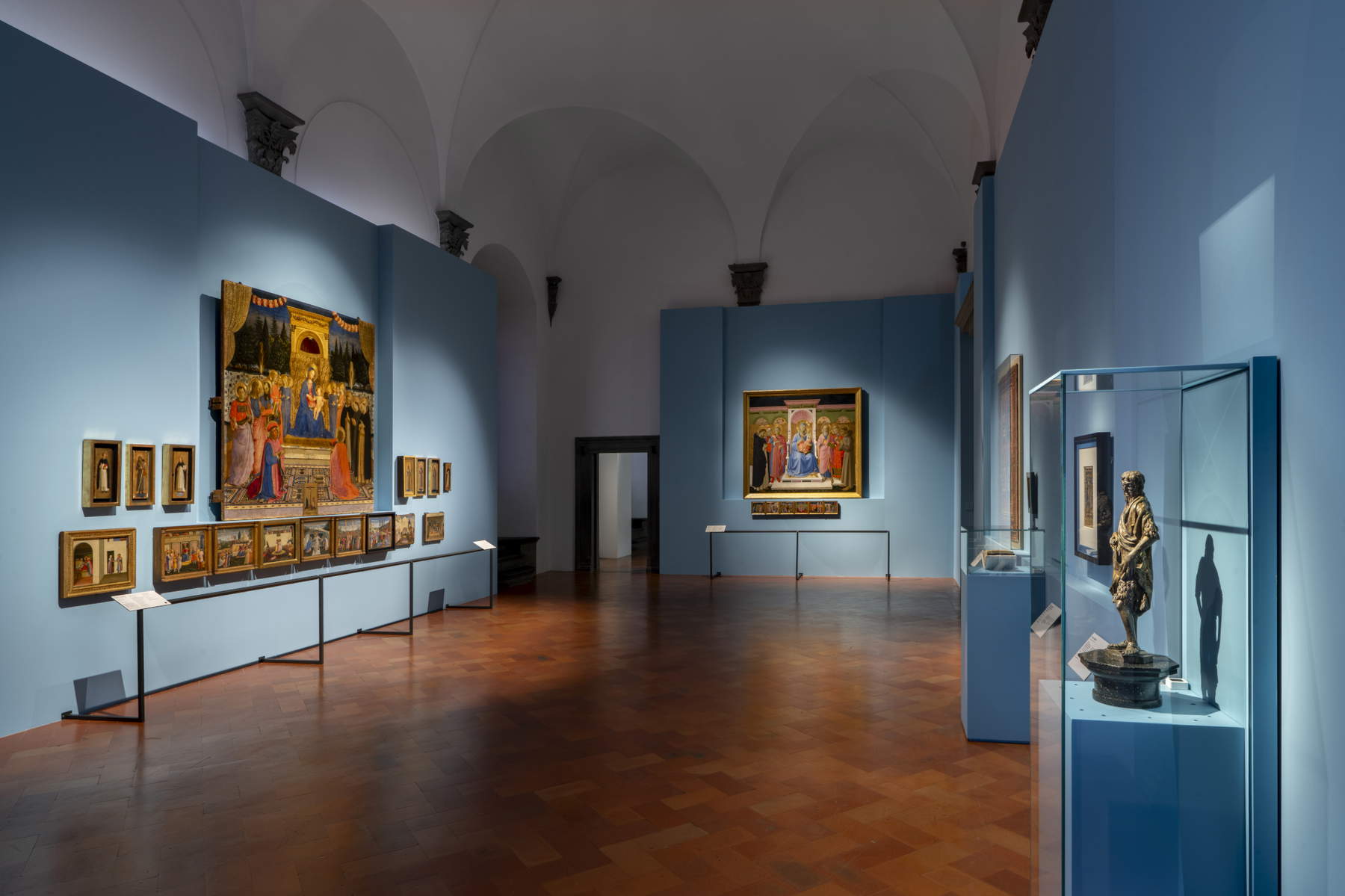
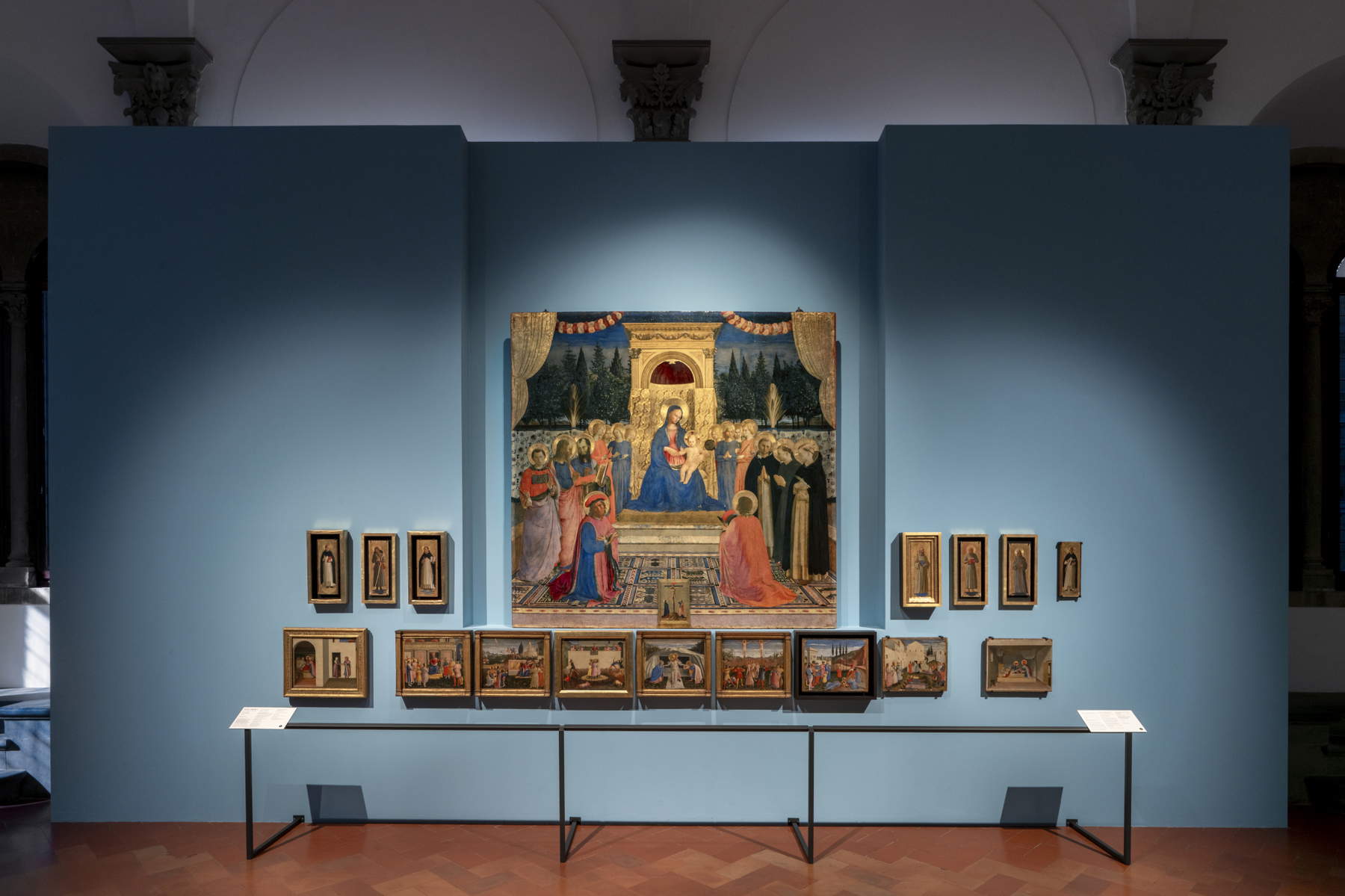
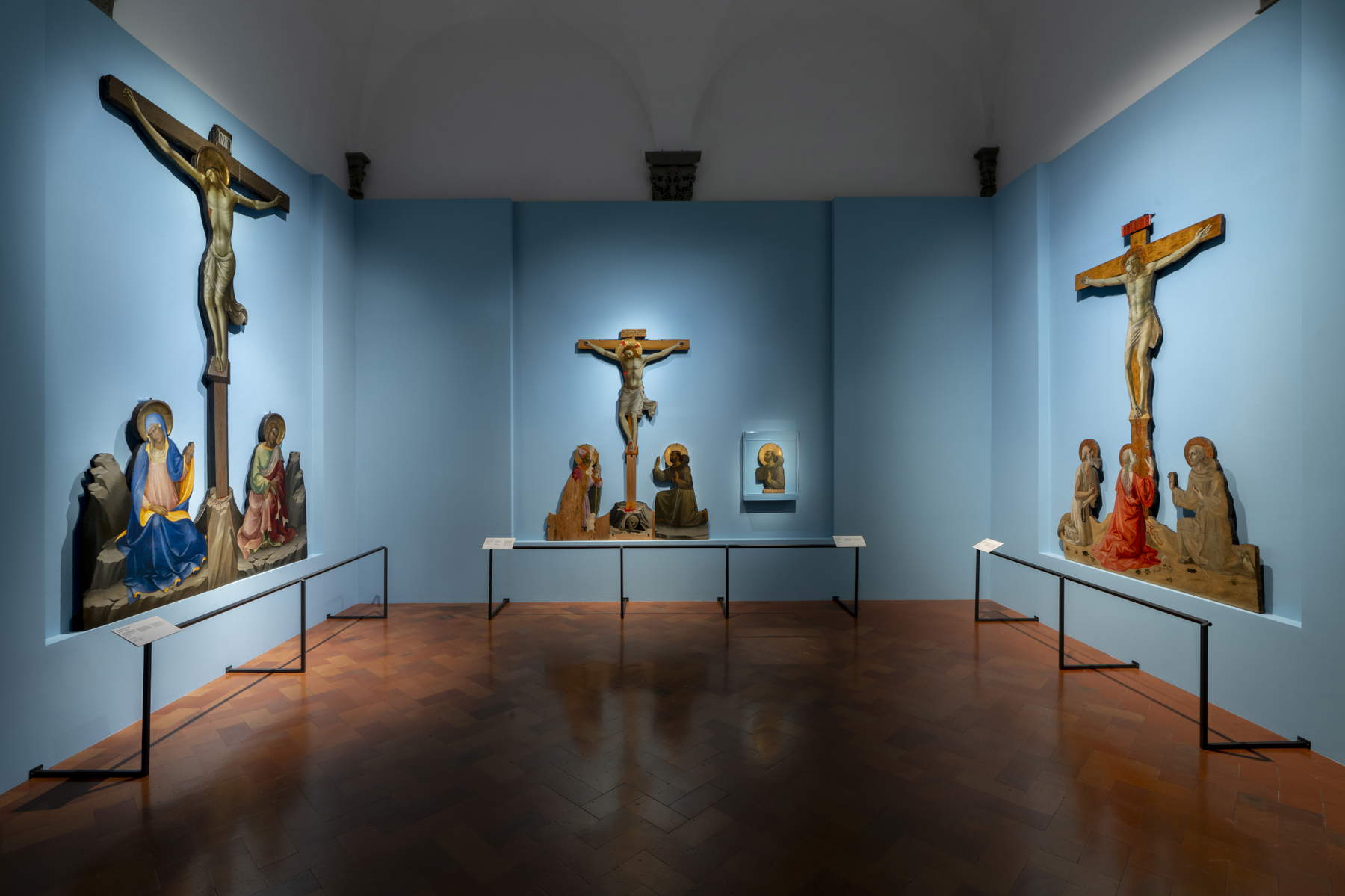
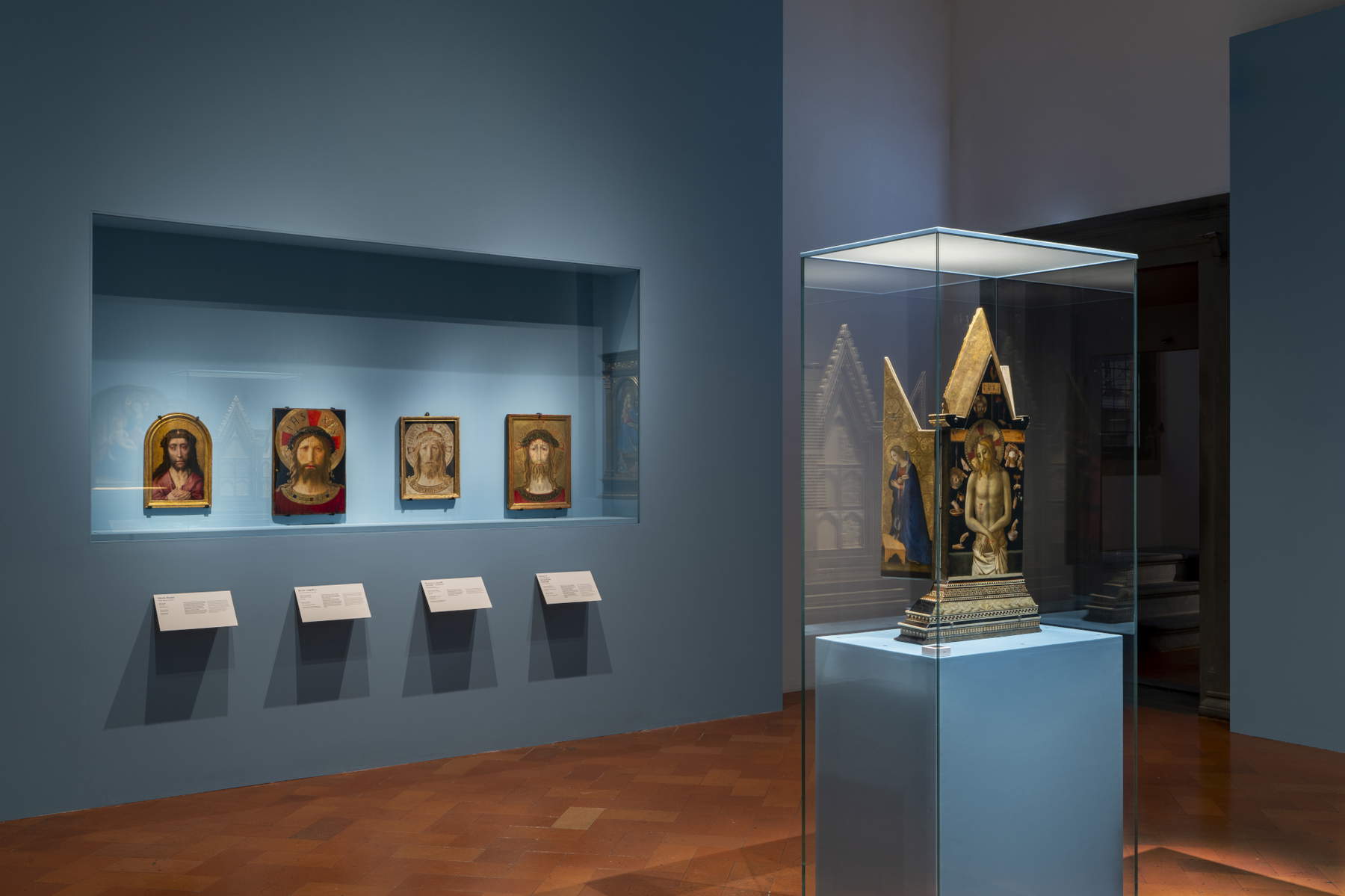


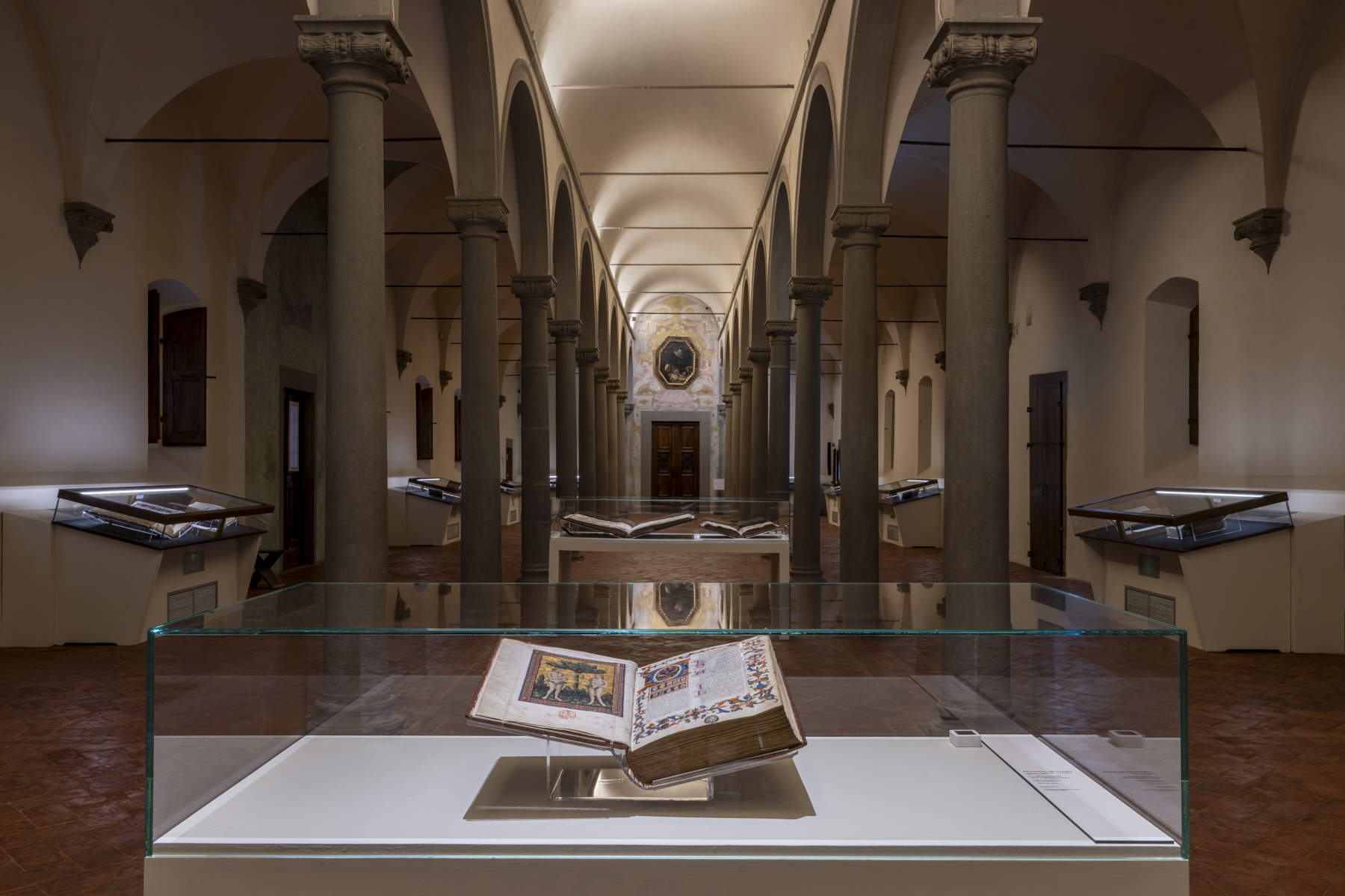

The exhibition unfolds between the two venues of Palazzo Strozzi and the Museo di San Marco, presenting more than one hundred and forty works including paintings, drawings, miniatures and sculptures from some of the most important Italian and foreign collections and museums. At Palazzo Strozzi the itinerary is divided into eight sections that follow both a chronological and thematic order, tracing the artist’s production. At the Museo di San Marco, the exhibition finds space in the large room on the first floor, which bears his name and accommodates his beginnings, and in the Library, where two sections highlight Beato Angelico’s work as an illuminator and the humanistic codices once preserved in the convent. The works dialogue naturally with the original frescoes that embellish the monastic rooms.
The tour at Palazzo Strozzi opens with a chapter devoted to the church of Santa Trinita, a center of artistic reference in early 15th-century Florence. Here families such as the Bartolini Salimbeni and the Strozzi promoted a vast architectural and decorative renewal that involved the complex, which became a place of artistic experimentation. This is evidenced by Lorenzo Monaco’s frescoes, the Annunciation and altarpieces entrusted to Gentile da Fabriano and Beato Angelico himself. Santa Trinita represents a rare example of articulated patronage, in which cult, dynastic memory and artistic languages intertwine. The next section explores the birth of a new figurative language, the result of commissions related to convents, hospitals and confraternities, in which tradition and innovation merge in a new sensibility, more attentive to space and perspective. Angelico stands as the protagonist of this season, able to unite chromatic brilliance and gold with the harmony of Masaccio’s innovations, shaping a limpid and carefully constructed painting.
A central chapter is devoted to the convent of San Marco, transformed thanks to the support of Cosimo de’ Medici into one of the city’s main spiritual and cultural centers. Here Angelico made the altarpiece for the high altar, now exceptionally reassembled with seventeen of the eighteen parts known today, considered the first true Renaissance altarpiece for monumentality of the new square format and narrative clarity of the predella. Also presented alongside this is the Annalena Altarpiece, another important testimony to the Medici commission.
The itinerary continues with an in-depth look at the theme of shaped crucifixions, images of strong devotional impact that combined painting and sculpture, amplifying the presence of the sacred on altars and emotionally involving the faithful. From the works of Lorenzo Monaco to the interpretations of Angelico and his collaborators, this iconographic typology finds examples of extraordinary intensity in the exhibition.
Another section investigates Angelico’s relationship with sacred images intended for corporations, hospitals, convent spaces and domestic settings, such as the Madonnas of Humility and the isolated image of Christ, subjects he was able to reinterpret with a spiritual force and naturalistic rendering capable of deeply touching the faithful. Angelico introduced the vision of the suffering Christ as King of the Apocalypse, inspired by Roman cult icons and Flemish models.
The exhibition narrative then reaches the major commissions, where Angelico’s painting is measured by solemn themes such as the Annunciation, addressed in panels, in the frescoes of St. Mark’s and in the upper sections of polyptychs and here compared with other masters of the time, from Filippo Lippi to Giovanni di Paolo. Along this path emerge the relationships with prestigious families and patrons who saw in the altarpieces a powerful instrument of devotion and representation.
It continues with the Roman period, documenting Angelico’s long stays at the papal court between 1445 and 1455. The works testify to his work for Eugene IV and Nicholas V, including the frescoes in the Niccolina Chapel, a manifesto of Christian humanism. During these years the artist also worked for Cardinal Juan de Torquemada, a Dominican theologian, producing two panels with the Crucifixion, on display in the exhibition, as well as an altarpiece of which two predellas with stories of Christ are presented in the room.
The tour at Palazzo Strozzi concludes with the section devoted to the Medici. For Cosimo and his son Piero “the Gouty,” Angelico produced works of great symbolic and devotional value, such as the Armadio degli Argenti at Santissima Annunziata and the altarpiece destined for the Franciscan convent of Bosco ai Frati, in Mugello. These works document the role of Medici patronage in Angelico’s last years of activity.
The exhibition also includes a special project Zoom on Angelico, which transforms a room into a multimedia environment thanks to a large screen on which images shared by visitors on social networks with the hashtag #ZoomSuAngelico run. This social wall is intended to make the exhibition a choral and participatory narrative, creating a participatory dialogue between the public and the artist’s masterpieces.
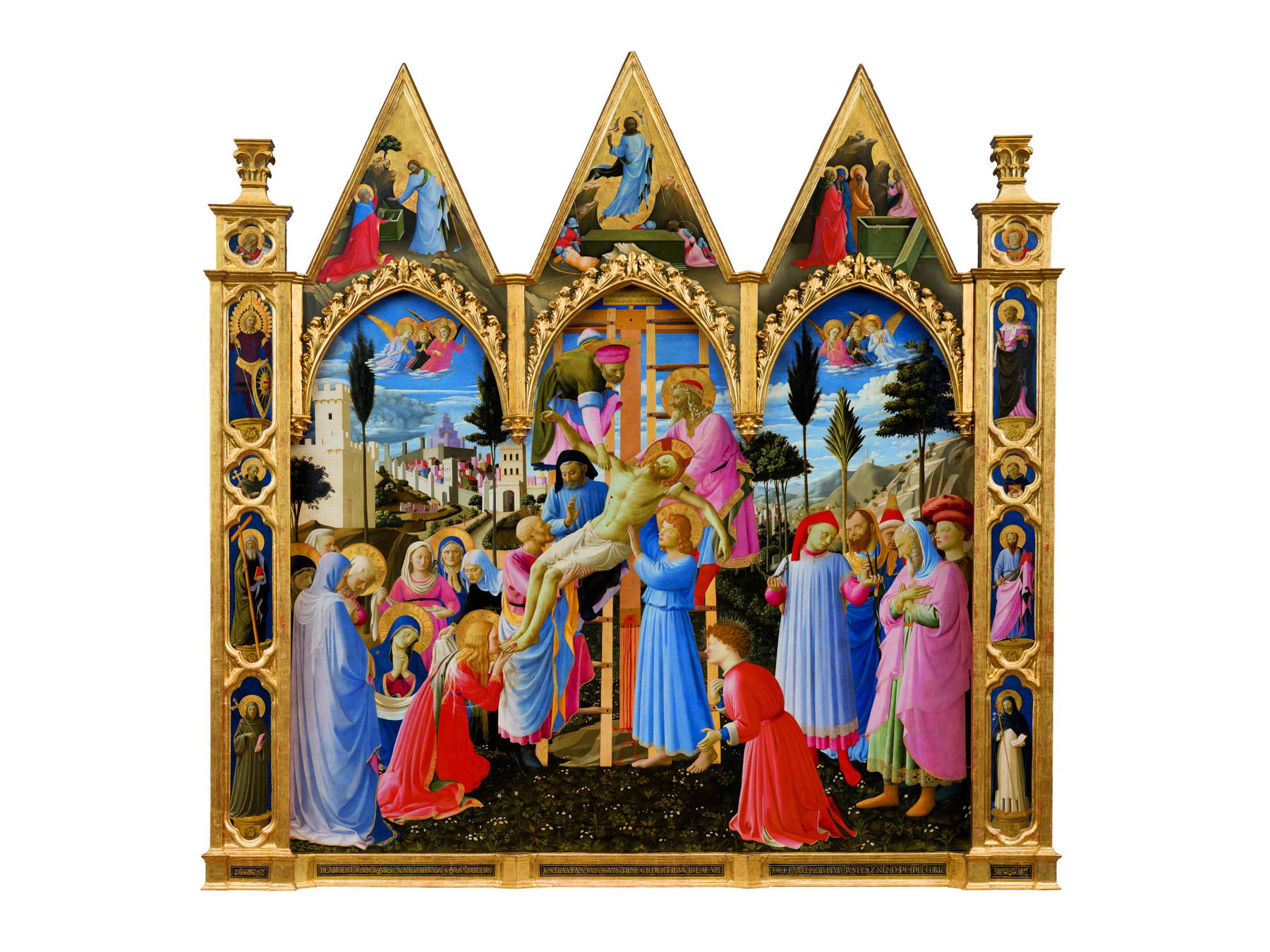
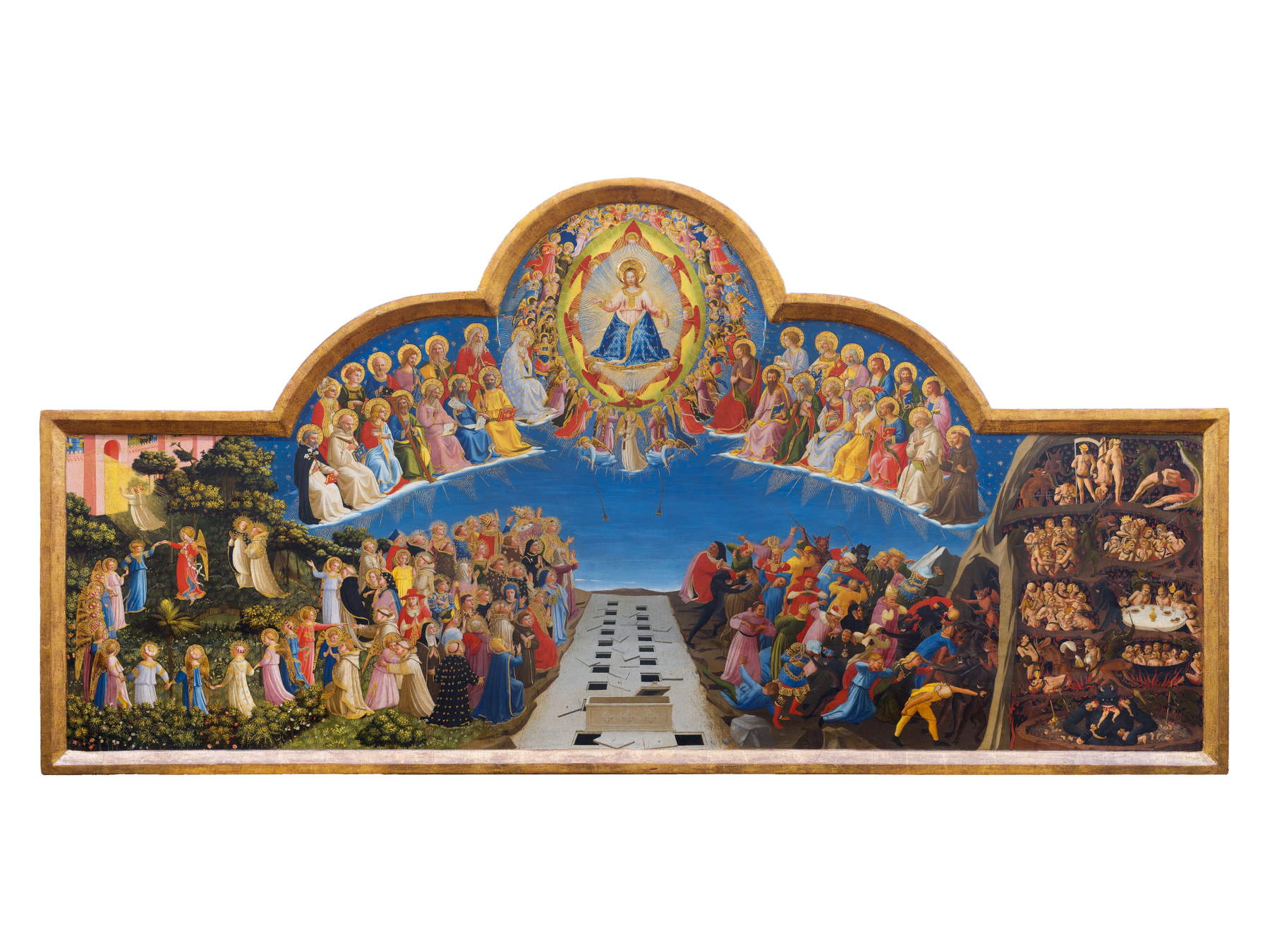
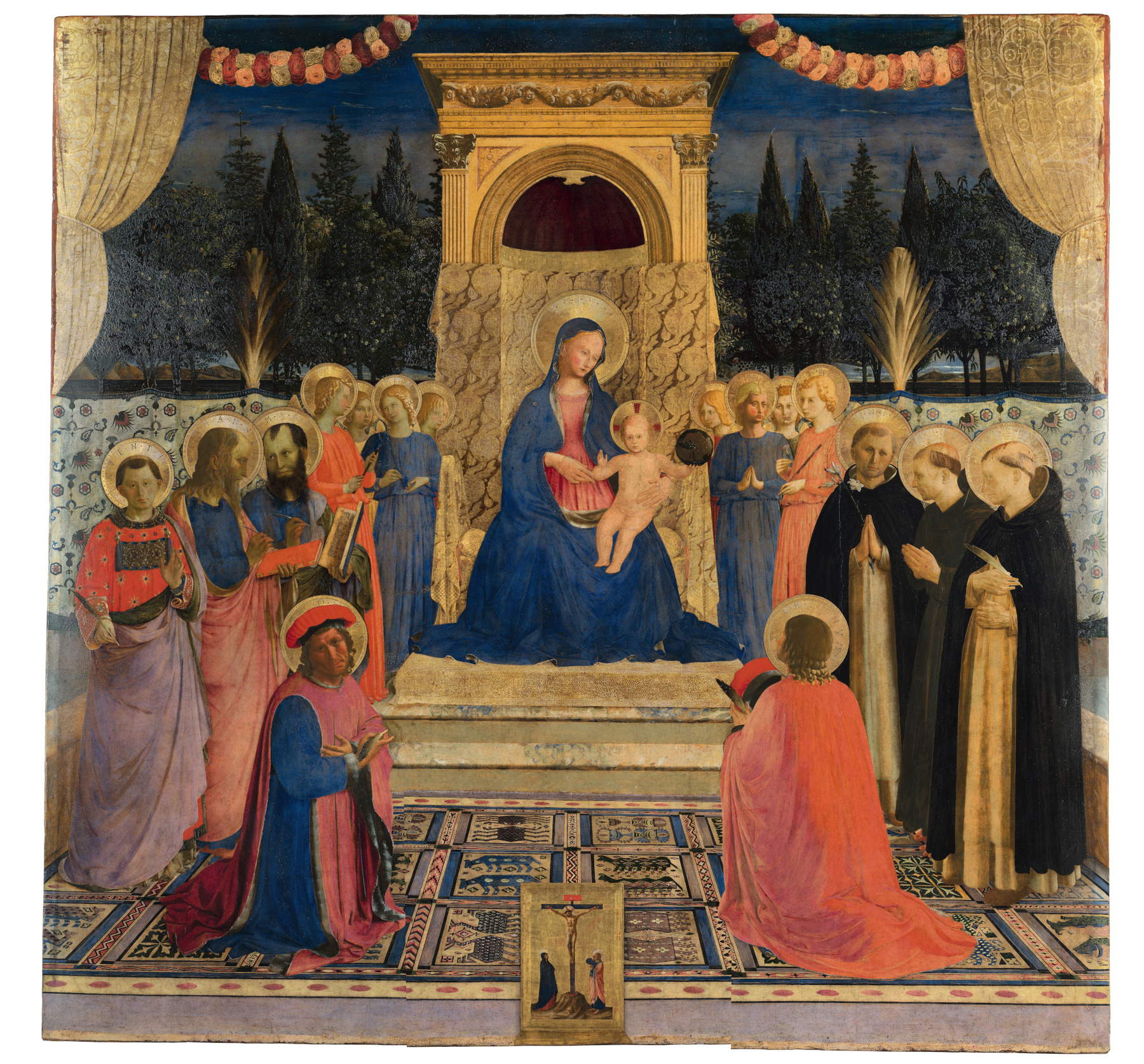
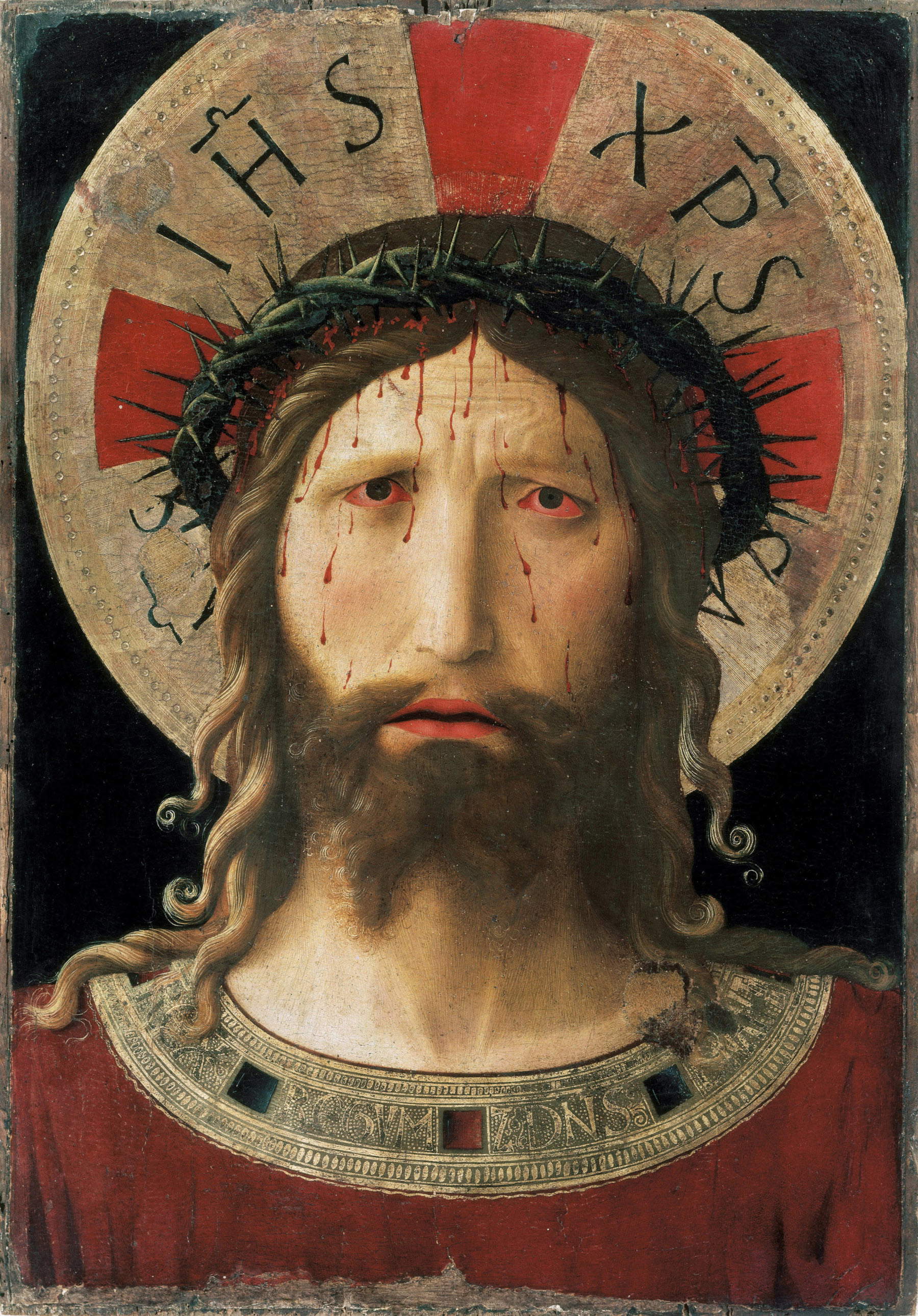
The tour at the Museo di San Marco opens with a room devoted to Beato Angelico’s early days and the artistic context in which he was formed. On display here is the Fiesole Altarpiece, painted in triptych form between 1420 and 1423, at the time of the painter’s entry as a Dominican friar into the convent of San Domenico. This work, created when Angelico was just over twenty-five years old, already reveals the very high level reached by the young artist. A panel illustrates a possible reconstruction of the original ensemble, transformed in 1501 into a Renaissance square altarpiece by Lorenzo di Credi, while the paintings of the predella and pillars are now preserved in several museums.
On the main wall is a sequence of works attributed to Angelico’s early days, arranged chronologically: from the Thebaid (1415-1420) to the predella with theImposition of the Name on the Baptist (1428-1430). This itinerary shows his evolution from his role as the leading exponent of late Florentine Gothic to that of a protagonist, alongside Masaccio, of the nascent Renaissance painting, as evidenced by the comparison between the Saint Peter Martyr Altarpiece and the Triptych of Saint Juvenal. Opposite, other works reveal Angelico’s relationships with other artists such as Starnina, the Master of the Straus Madonna, Lorenzo Ghiberti, Lorenzo Monaco and Masolino da Panicale. At the end of the room stands out the monumental Tabernacle of the Linaioli, made between 1432 and 1436 by Lorenzo Ghiberti and Beato Angelico.
The cloister of Sant’Antonino, on the other hand, houses the fresco of St. Dominic in Adoration of the Crucifix, in which the saint embraces the cross with dramatic intensity, expressing through his face and gaze an intimate dialogue with Christ, the heart of Dominican spirituality. In the 17th century the work was framed with marble and supplemented by Cecco Bravo, who painted figures of Mary, St. John and angels, reducing the original surface area of Angelico’s fresco.
The Sala del Capitolo, on the other hand, houses the monumental Crucifixion with Saints, the largest fresco painted by Angelico at St. Mark’s. The scene depicts Christ crucified between the two thieves and a vast procession of figures: saints connected to the Medici, the city and the Dominican order, the Fathers of the Church and the founders of the main monastic orders. Below the cross a series of medallions depicts eminent figures of the Dominican family, as the fruits of a vine held by St. Dominic himself. The work, now almost completely devoid of the azurite that once colored the sky, restored an impression of extraordinary depth.
On the upper floor is the dormitory, built by Michelozzo between 1437 and 1443, with forty-four cells frescoed by Angelico and his collaborators. Each space, intended for the friars’ prayer and meditation, is enriched with sacred scenes. In the east corridor, reserved for elderly friars, episodes from the life of Christ appear; in the south corridor, intended for young friars, variants of the Crucifix with St. Dominic praying, a theme dear to the order, prevail. In the northern corridor, intended for the laity, the images have a more narrative tone, linked to Gospel stories. Among the most significant cells is the one that was probably inhabited by St. Antonino Pierozzi during his priory, while the larger one was reserved for Cosimo de’ Medici, who made it his own place of spiritual retreat and also hosted Pope Eugene IV on the occasion of the consecration of the church of San Marco in 1443.
The library, built by Michelozzo between 1441 and 1444 thanks again to the munificence of Cosimo de’ Medici, is considered the first modern public library. On the occasion of the exhibition, the spaces will host two special sections: one dedicated to Angelico the illuminator and the other to the library itself, with the display of numerous codices once again exhibited in their original location. The heart of the collection was the collection of Niccolò Niccoli, a great Florentine humanist who left his manuscripts to Cosimo and a group of friends so that they could be consulted by scholars. There were sacred and secular texts in Latin and Greek, works in Hebrew and Arabic, classical authors and patristic treatises. Some volumes played a central role in the religious and cultural debates of the time, such as the Greek texts used at the Council of Ferrara-Florence or the Legenda aurea, a source of inspiration for many of Angelico’s works.
Alongside painting, in fact, Angelico cultivated the art of miniature painting with extraordinary results. Inspired by the Camaldolese tradition of Santa Maria degli Angeli, taken to the heights of magnificence by Lorenzo Monaco and other city workshops, the friar painter elaborated a personal, sober and luminous language. His masterpieces include the Gradual 558 of San Domenico in Fiesole, the Missal 533, the Psalters of St. Mark’s, and Antiphonary 43. A tireless innovator, he directly supervised illustrative programs while relying on collaborators, forming a generation of illuminators such as Benozzo Gozzoli, Domenico di Michelino, and Zanobi Strozzi. This activity helped shape Florentine miniature painting for a long time, placing Angelico as an unsurpassed reference in this artistic field as well.
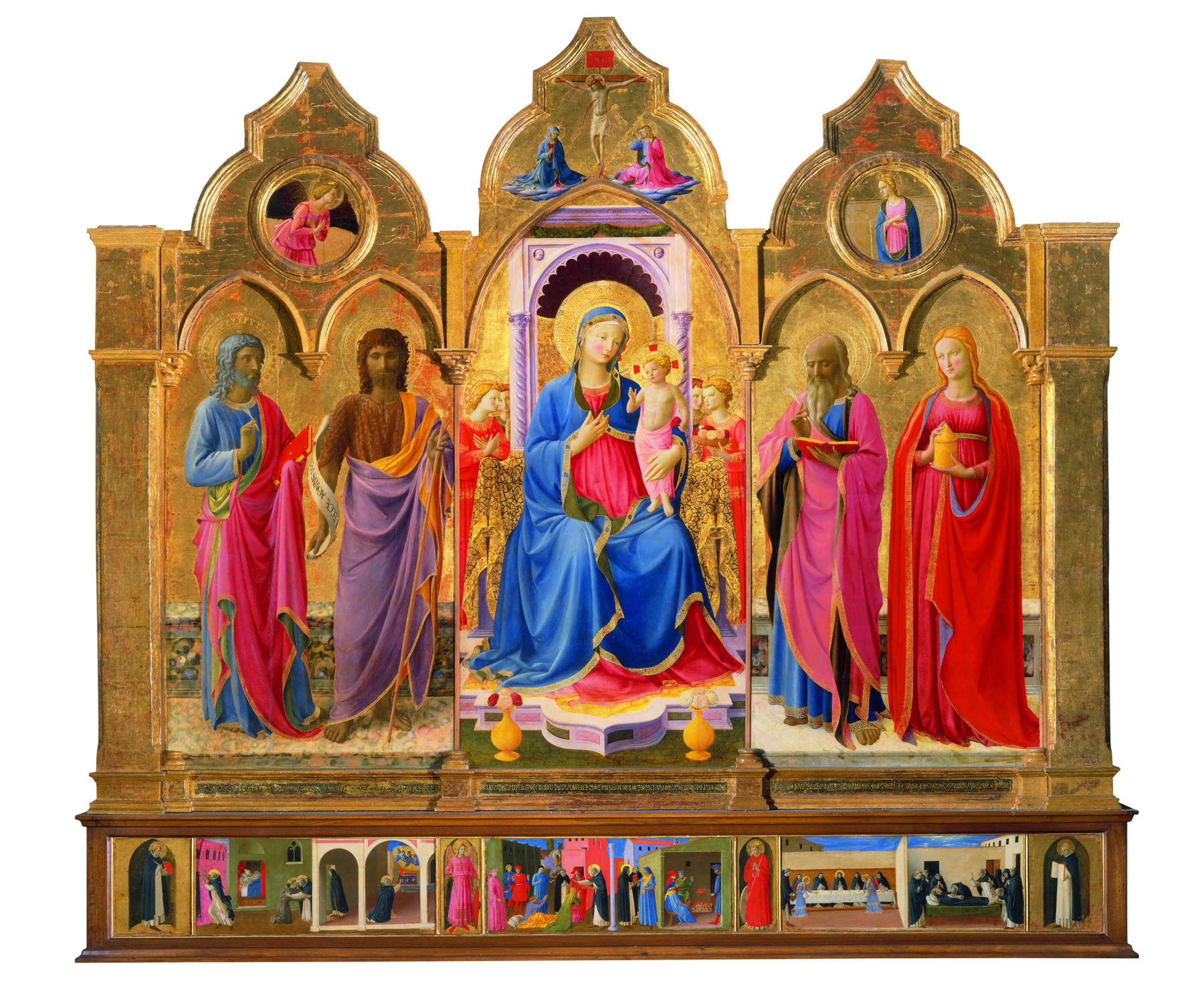

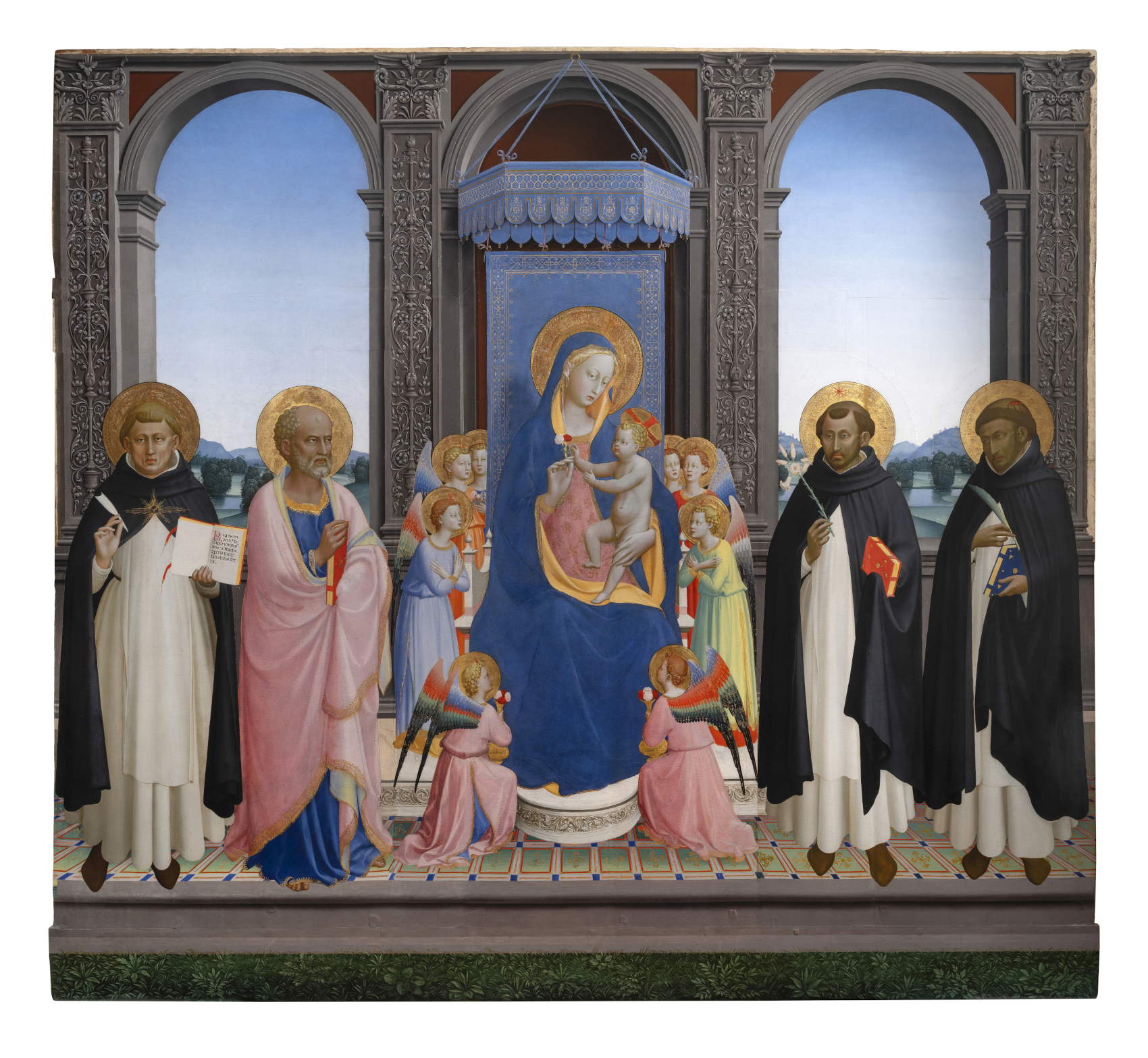
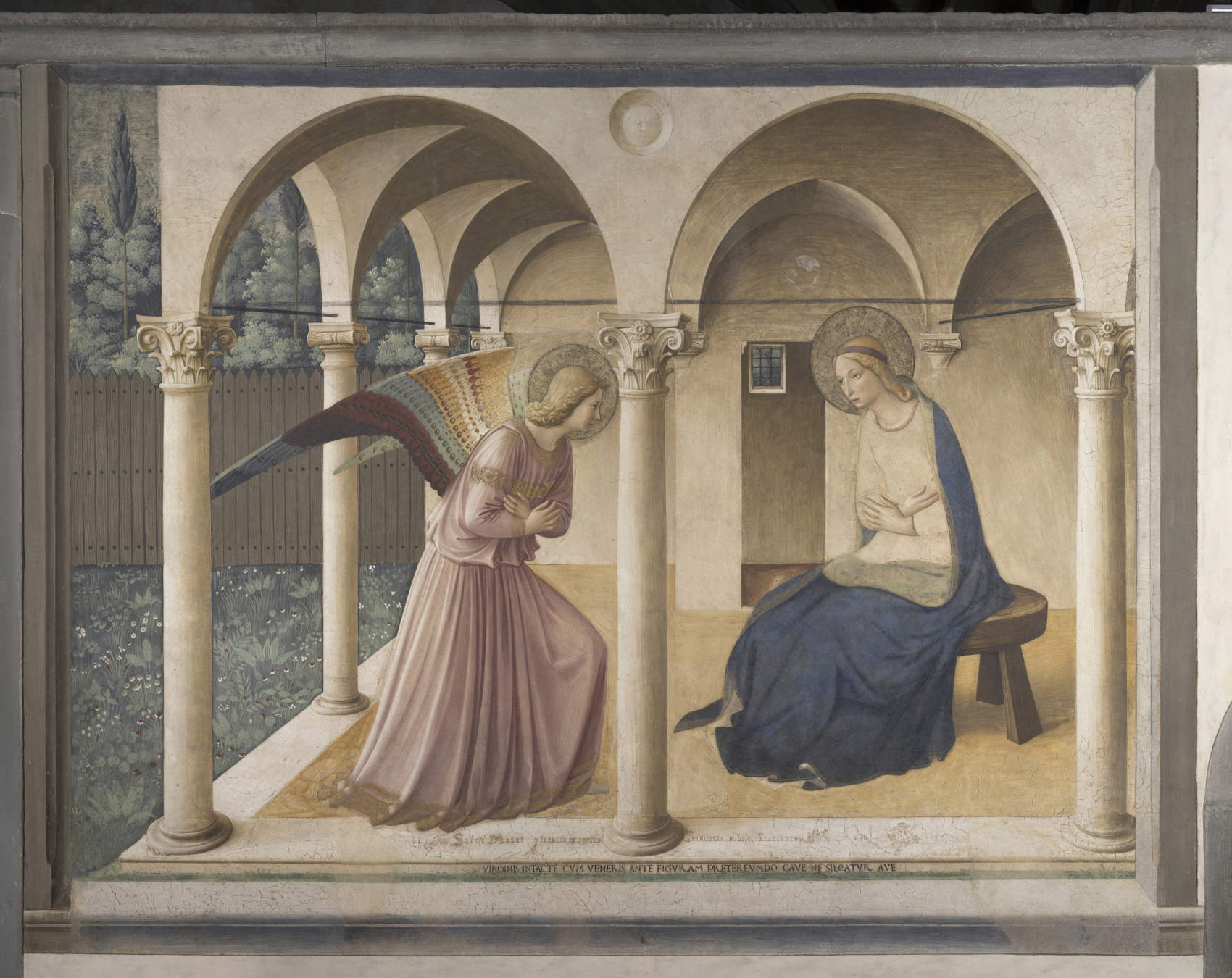
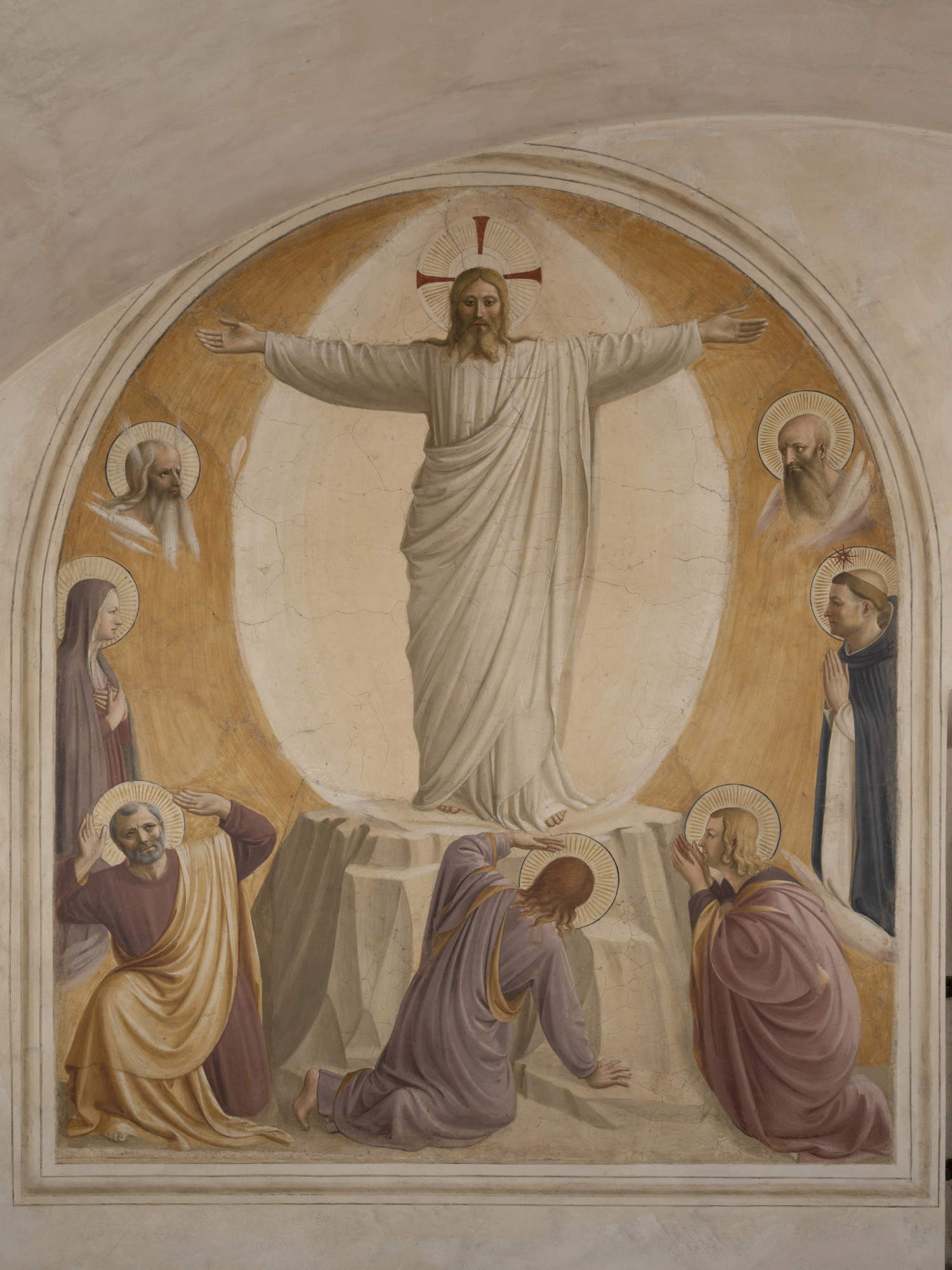
The Beato Angelico exhibition made possible an extensive restoration campaign involving nearly thirty works including panels, frescoes, miniatures, codices and sculptures. Some interventions will continue after the conclusion of the exhibition, but already the public can admire many masterpieces restored to their full legibility. In fact, the initiative was an opportunity to address conservation issues that have recently emerged and to initiate complex and long-overdue interventions.
Thanks to diagnostic investigations and maintenance work, knowledge of artistic techniques and the state of conservation of the works has been significantly enriched. The campaign, carried out in collaboration with theOpificio delle Pietre Dure and established restorers, has combined the enhancement of the heritage with a concrete commitment to protection and transmission to the future. Special recognition goes to Friends of Florence and Simonetta Brandolini d’Adda, whose support made possible some of the most complex and delicate restorations. Thanks are also due to Gucci for the intervention on the Franciscan Triptych and to Marchesi Antinori for the restoration of Pesellino’s shaped Crucifixion.
After the opening of the exhibition, a volume will be published collecting all the restorations and investigations carried out, accompanied by extensive illustrations and texts accessible even to a non-specialist audience.
Another major aspect concerns the graphic reconstructions of seven large altarpieces by Beato Angelico, dismembered and dispersed over the centuries. This is a complex work conducted by Luca Brunke and Fabrizio Nevola (University of Exeter), with the supervision of Carl Brandon Strehlke and the contribution of numerous restorers and art historians. Two of these reconstructions, those of the San Pietro Martire Altarpiece and the Fiesole Altarpiece, are on display at the Museo di San Marco alongside the original works. The others-the Strozzi Altarpiece, theCoronation of the Virgin (Paradise), the Altarpiece of the Company of St. Francis in Santa Croce(Franciscan Triptych), the St. Mark’s Altarpiece, and the Perugia Altarpiece-are presented at Palazzo Strozzi, also alongside the original works. The three-dimensional reconstruction of the Strozzi chapels in the sacristy of Santa Trinita, the original home of the Strozzi Altarpiece, completes the itinerary. One of the centerpieces of the exhibition is the reconstruction of the San Marco Altarpiece, commissioned by Cosimo de’ Medici for the high altar of the church of the same name. For the first time in more than three hundred years, 17 of the 18 known parts of the work are brought together from major museums around the world, including the Louvre, the National Gallery in Washington, the Alte Pinakothek in Munich and the National Gallery of Ireland in Dublin. Intesa Sanpaolo is Main Partner of the exhibition and supports the project, in particular by supporting the reconstruction of the St. Mark’s Altarpiece.
Hours:
Palazzo Strozzi: Daily from 10 a.m. to 8 p.m.; Thursday until 11 p.m.
St. Mark’s Museum: Daily from 8:30 am to 1:50 pm. Closed Mondays. Last admission at 12:45 p.m.
 |
| Florence, major Beato Angelico exhibition presented between Palazzo Strozzi and Museum of San Marco |
Warning: the translation into English of the original Italian article was created using automatic tools. We undertake to review all articles, but we do not guarantee the total absence of inaccuracies in the translation due to the program. You can find the original by clicking on the ITA button. If you find any mistake,please contact us.